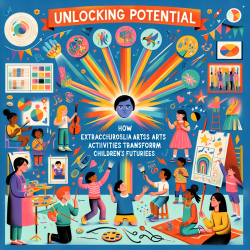Introduction to Community-Driven Research
In the realm of speech-language pathology and online therapy services, the integration of community-driven research is pivotal for fostering effective interventions. The research article, A partnership study of PCBs and the health of Mohawk youth: lessons from our past and guidelines for our future, provides valuable insights into how practitioners can enhance their skills by engaging in collaborative research partnerships.
Understanding the Research Context
The study conducted by Schell and Tarbell (1998) explores the impact of polychlorinated biphenyls (PCBs) on the health of Mohawk youth. This research was a collaborative effort between the Akwesasne community and researchers from the State University of New York at Albany. The partnership was built on the principles of mutual respect, equity, and empowerment, ensuring that both scientific and community goals were addressed.
Key Outcomes and Their Implications
The research highlighted several key outcomes that practitioners can leverage to improve their practice:
- Community Involvement: Engaging community members in the research process ensures that the study is culturally relevant and respectful. Practitioners can apply this by involving families and local stakeholders in therapy planning and execution.
- Data Collection and Feedback: The study employed community members as research assistants, providing them with extensive training. This approach can be mirrored in therapy settings by training paraprofessionals or family members to support data collection and feedback processes.
- Mutual Goals and Empowerment: By setting joint goals, the research maximized data quality and minimized intrusion. Practitioners can adopt this by collaboratively setting therapy goals with clients and their families, ensuring that interventions are personalized and effective.
Encouraging Further Research
Practitioners are encouraged to delve deeper into community-based research methodologies. By doing so, they can uncover innovative strategies that align with the unique needs of their client populations. Engaging in further research not only enhances professional skills but also contributes to the body of knowledge in speech-language pathology.
Conclusion
The partnership study of PCBs and the health of Mohawk youth exemplifies the power of community-driven research. By adopting similar principles in their practice, speech-language pathologists and online therapy providers can achieve better outcomes for children. Practitioners are urged to explore the full research paper for a comprehensive understanding of the methodologies and outcomes.
To read the original research paper, please follow this link: A partnership study of PCBs and the health of Mohawk youth: lessons from our past and guidelines for our future.










